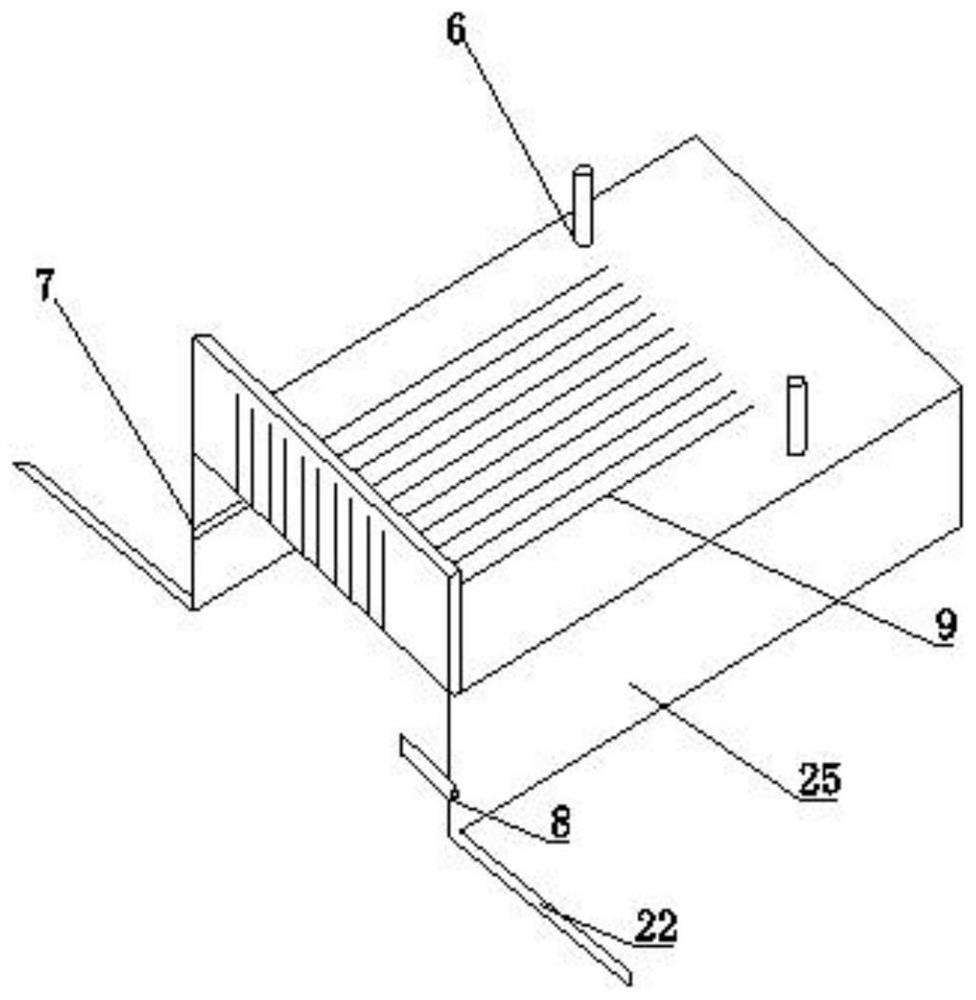Method for cutting textile sample by using textile sample cutting machine
A textile and tailoring machine technology, applied in the field of textile tailoring, can solve the problems of increased labor intensity, operator difficulties, and reduced tailoring accuracy, and achieve the effects of improving labor efficiency, broad application prospects, and improving tailoring accuracy
- Summary
- Abstract
- Description
- Claims
- Application Information
AI Technical Summary
Problems solved by technology
Method used
Image
Examples
Embodiment 1
[0038] See attached Figure 1-7 , a cutting machine for textile samples is composed of a bottom console 1, a middle layer 4, a pressing plate 5, a protective cover 2, and an array-type combined knife holder 3.
[0039] The bottom operating platform 1 includes an L-shaped table top, a positioning column 6, a support plate 25 and a slide rail 7; the L-shaped table top is provided with an L-shaped hollow groove 9; the positioning column 6 is located on the horizontal surface of the L-shaped table top, The support plate 25 is located under the horizontal surface of the L-shaped table; the slide rail 7 is located inside the support plate 25;
[0040] The middle layer 4 is an L-shaped structure; the L-shaped structure is provided with an L-shaped hollow groove 10; the L-shaped structure is provided with a positioning hole 19;
[0041] The pressing disc 5 is a flat plate structure with a positioning hole 20; the lower surface of the flat plate structure is provided with a cutting kn...
Embodiment 2
[0044] Embodiment 2 Utilize the method for cutting the textile sample by the cutting machine of the above-mentioned textile sample, comprising the following steps:
[0045] S1. Lay the middle layer on the bottom operating table, spread the cut samples on the middle layer, and the positioning columns and positioning holes correspond one by one;
[0046] S2. Insert the positioning holes of the pressure plate into the four positioning columns on the operating table, and the top of the positioning columns has external threads, which are connected with nuts;
[0047] S3. Tighten the nut of the first positioning column first, then the tailor straightens the corresponding side of the textile sample, tightens the nut of the second positioning column, then straightens the remaining two corners of the textile sample in turn, and tightens the nut of the positioning column ;
[0048] S4. The array-type combined knife holder is located under the protective cover. The array-type combined k...
PUM
 Login to View More
Login to View More Abstract
Description
Claims
Application Information
 Login to View More
Login to View More - R&D
- Intellectual Property
- Life Sciences
- Materials
- Tech Scout
- Unparalleled Data Quality
- Higher Quality Content
- 60% Fewer Hallucinations
Browse by: Latest US Patents, China's latest patents, Technical Efficacy Thesaurus, Application Domain, Technology Topic, Popular Technical Reports.
© 2025 PatSnap. All rights reserved.Legal|Privacy policy|Modern Slavery Act Transparency Statement|Sitemap|About US| Contact US: help@patsnap.com



